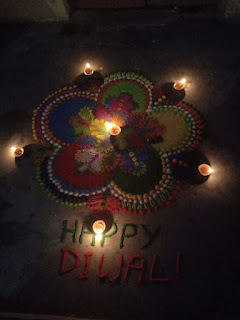BIG QUESTION
There is an awareness in the government that the absence of tourist infrastructure is a major reason why India loses out to Southeast Asia.
India has a vast basket of living and diverse cultural traditions,
Traditional expressions, intangible cultural heritage comprising masterpieces which need institutional support and encouragement with a view to addressing areas critical for the survival and propagation of these forms of cultural heritage. Preserving our heritage is enshrined as a Fundamental Duty in our Constitution.
STEPS HAVE BEEN TAKEN
Prime Minister Narendra Modi recently inaugurated the Kushinagar international airport.
● The airport in eastern UP, the third international airport in the election-bound state, will mainly service the Buddhist tourism circuit.
● The Sri Lankan Airlines flight carrying monks and dignitaries was the first to land at the airport. st Asian nations such as Indonesia and Thailand.
IMPORTANCE
The term heritage has wide connotations spanning across nature, culture, food and other dimensions. Indian Art heritage primarily refers to the tangible heritage comprising of Paintings and art forms; Ancient Monuments and Archaeological Sites; Sculptures; Scriptures; Artefacts.
Threats to Indian Art Heritage:
- Theft: The incidents of thefts have been observed usually from unprotected monuments, ancient temples. The thefts cases have also been seen in the protected monuments and museums as well. It is due to negligence of security guards in museums, monuments etc.
- Smuggling: illicit traffic and smuggling in antiquities. Illicit traffic is motivated often by profit and sometimes by the demand for luxuries.
- Tourism: Unregulated tourism, tourist activities run by touts, private agents have affected the art heritage places.The Culture Ministry of India has reported that up to 24 Indian monuments have been declared “untraceable” or “missing” by the Archaeological Survey of India (ASI).
- Issues with security of museums: Most of the museums are poorly guarded due to shortage of manpower leading to theft of artefacts, fire accidents etc.
- Lack of public awareness: This leads to poor maintenance, vandalism, spoiling the monuments artefacts. Replacing the structures or building structures close to the monuments leading to
- Duplication: Fakes of paintings and art forms leading to threat to livelihoods of artists.
- Poor Maintenance: The state of the wall paintings in Ajanta caves is continuously getting worse, which can be attributed to humidity as well as to a lack of care.
- Encroachment of monuments: Another miss from the ministry has been encroachments of monuments. Over 278 centrally protected monuments have been encroached upon or have illegal occupants, as per government data.
Rationale behind safeguarding the art heritage:
- Evolution of human consciousness is a continuous process: History here serves as a laboratory and the past serves as a demarcation to understand the regional laws and social structures. This understanding helps in our progress towards an ideal society.
- The art heritage is the identity and pride of our country. It is duty of every citizen to protect, preserve and perpetuate the cultural richness.
- Tourism potential for art monuments and museums is very high. Tourism generates revenue for the state as well as private artists due to the money-multiplier quality.
- Infrastructure development takes place in and around the areas. Eg. Hampi despite being a small town has excellent infrastructure.
- It creates jobs for a lot of people from art industry and tourism industry as well
- It creates a feeling of oneness and a sense of attachment by enhancing a sense of belonging to a culture or a region.
- Every historical site has an important story to tell and these stories have inspired many people to strengthen their convictions and commitment to fight injustice and oppression.
- Strengthening Legislations and Initiatives: The Antiquity Act of 1947, Antiquities and Art Treasures Act of 1972 particularly provide for the prevention of smuggling and illegally dealing in antiques.
Recent bill to amend The Ancient Monuments and Archaeological Sites and Remains Act which allowed construction within 100m of the protected monuments should be avoided.
In 2015, the ministry launched an initiative of e-ticketing services in over 116 monuments under the ASI and launched an initiative to digitise cultural
Cultural awareness:
Curriculum modification – Identification and inclusion of heritage as an asset in school, Open departments of Heritage management on the lines of Ahmedabad University
Introduction of a compulsory offline and online training for tourism purposes willing to undertake ventures.
Heritage depiction and promotion through immersive technology & augmented reality
Re-Classify heritage and announce awards for people with exceptional heritage sense.
Greater involvement of universities in schemes promoting arts and culture as well as inclusion of Fine Arts as a subject in universities.
Adaptive reuse of heritage sites:
Restoring the historical sites in the form of festivals and inducing festivity link perceptions.
Recognizing ‘cultural heritage tourism’ as an upcoming industry by building cultural resources with an adaptation of scientific and technological knowledge to local circumstances as well as forming partnerships between local and global bodies.
resources....etc
WAYAHEAD
It is the duty of every citizen to value and preserve the rich heritage of our composite culture. The art and culture of our nation are a vast continuum, evolving incessantly since time immemorial. Naturally, preservation and conservation of India’s rich cultural heritage and promotion of all forms of art and culture, both tangible and intangible, including monuments and archaeological sites, anthropology and ethnology, folk and tribal arts, literature and handicrafts, performing art of music-dance-drama and visual arts of paintings-sculpture-graphics is essential and assumes a lot of importance.




Comments
Post a Comment